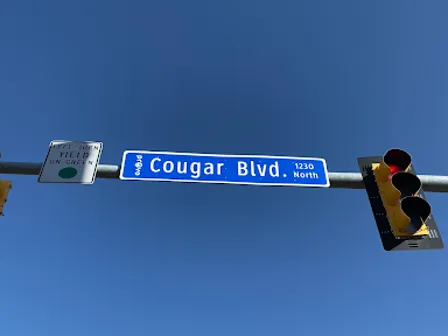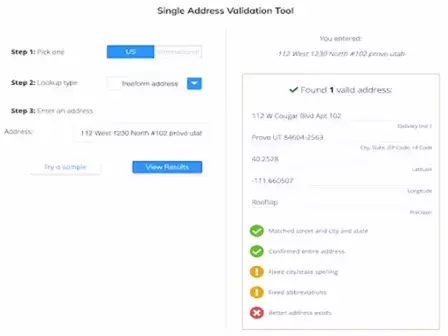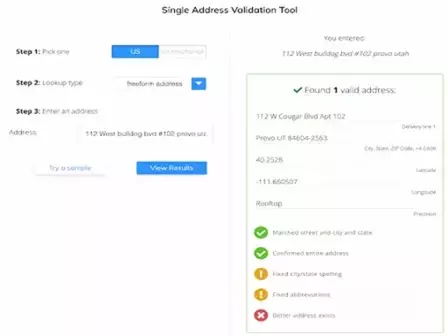Why street addresses change & how to manage it

There are more than 210 million addresses in the United States, and they always stay the same.
Just kidding - they change a lot.
A Street Address Change is what happens when a component of an address, like building number, street name, or ZIP Code, is changed. Common reasons for changing addresses are to improve routing efficiency, conform to new local addressing systems, fix previous errors, accommodate construction, or honor prominent figures & organizations.
Addresses change more than you might know. Millions of addresses change every year in the US alone without counting ZIP+4 Code changes. Postal addresses are surprisingly fluid.
Address validation and standardization can help you to overcome many of the challenges involved with managing an ever-changing address database. You can try our tools here or read on to learn more about address changes.
| Single Address Validation | Bulk Address Validation | Address Validation API |
|---|---|---|
In this article, we'll cover:
- Why addresses & address components change
- Business problems caused by address changes
- How businesses can efficiently manage address change
- How does address verification work?
- Approaches to cleaning your changed addresses
- What about master address lists?
- Key takeaways
Why addresses & address components change
A change to any address component, no matter how small, is a change to the entire address.
Here's why addresses change by component, namely by:
Street numbers

Street numbers change for a variety of reasons.
They change to resolve duplicates, help first responders more quickly locate emergencies, and fit the sequence with the rest of a street as it's further developed. Changes to street numbers also include fixing errors in the United States Postal Service (USPS) data.
In some cases, street numbers are wiped off the face of the earth due to natural disasters.
You can, and people do, change street numbers. Maybe you bought the Munster's old house at 1313 Mockingbird Lane, and you're sure your street number is the cause of a recent string of bad luck.
Want to change your address? Often the starting point is your local zoning administration office rather than the post office.
Street names
Street names also frequently change.
For example, 1230 North in Provo, Utah, was changed to Bulldog Boulevard in honor of the adjacent high school's mascot. After the high school moved to a new location, a local university purchased the old school building, and the street was quickly renamed Cougar Boulevard after the university's mascot.

Streets are also frequently renamed for people who have provided extraordinary public service or some exemplary contribution to the public.
For example, maybe you've been around long enough to notice a street name change to Martin Luther King Jr Street. Now there are more than 900 such street names in the United States. Everyone who lived at or worked on those streets had address changes. That can mess up your address database by introducing many duplicate records.
City names
City names change too.
More than 300 US cities have had former names. Los Angeles was once known as "El Pueblo de Nuestra Señora la Reina de Los Ángeles de la Porciúncula," which translates to The Town of Our Lady the Queen of the Angels of Porciúncula. City boundaries frequently change, meaning that addresses will have new or changed city names when this happens.
The Reconciliation in Place Names Act was introduced to rename those locations. When any of the affected cities' names change, all residential and business addresses in those cities will change, causing duress to data managers concerned about duplicate records.
ZIP Codes
How often do ZIP Codes change, and why? Each year, the USPS creates new ZIP Codes, and existing ones change. ZIP Codes change because populations increase, boundaries realign, and delivery routes change.
As the authority for mailing addresses in the US, the United States Postal Service (USPS) owns the ZIP Codes and frequently changes them to improve postal operations.
The +4 Codes at the end of a 9-digit ZIP Code change even more frequently. The +4 indicates a specific delivery route, meaning the mail truck's actual path.
Due to new development, remapping, and changes in the number of postal employees, some +4s can change as frequently as monthly. Learn more in the article Zip+4 Code Lookup - Last 4 Digits of ZIP Codes Meaning & Use.
Business problems caused by address changes
Frequent address changes aren't fun for most businesses. Address changes cause lots of business problems, including:
-
Duplicate addresses and records
-
Internal groups updating different versions of the duplicate records, creating disjointed silos of customer and prospect information
-
Wasted labor, postage, and marketing costs associated with mailing to duplicate addresses
-
Poor customer experiences
-
Bloated database and storage
-
Bad data, difficulty blending/merging datasets, and inefficient data management
-
Inaccurate reporting and poor decision making
-
General confusion and frustration by sales, customer service, customer success, marketing, and leadership.
Those in business who bear the brunt of address change problems include data managers, IT/IS, data analysts, decision-makers, customer service, customer success, sales, and marketing. Basically, anyone who deals with data, the customer, and decision-making.
But don't worry - there's a simple solution.
How businesses can efficiently manage address change
The problem of changing addresses is big and ugly - the solution can be elegant and simple.
Address specialists like Smarty offer you that solution - address verification (validation).
With address verification, Smarty keeps track of all address changes for you. All address aliases created by address changes are identified for all delivery points.
Address verification allows you to simply and elegantly identify duplicate records to merge records for even the most massive datasets.
Presto - your changed address woes are solved.
But how does address verification work?
Address verification works by checking an address in your database or one entered in your online forms against an authoritative database of already verified addresses.
The verification results not only return the correct address but also up to 55 points of metadata, including whether the address is an alias of another.
Address verification example
To illustrate how address verification works, let's look at actual examples using Smarty's Single Address Verification tool, which is free to use.
Let's use the example above where the street name "1230 North" in Provo, Utah, was changed to "Bulldog Boulevard" and later changed again to "Cougar Boulevard".
The verification tool calls for an address to be added in the left column, as shown below. We'll enter an address for an apartment at the original street name of "1230 North".

In the example above, the output is shown in the right column.
Notice that "1230 North" has been updated to "Cougar Blvd". At the bottom of the screen, the red "X" indicates the verified address is a better/updated version.
Proper verification parses addresses into the finest level of components and then normalizes and standardizes the data.
In the above example, notice the address normalization and standardization that has taken place. "West" was abbreviated to "W", and "#" was changed to "Apt" per USPS standards. The city and state were capitalized. Additionally, the missing ZIP Code was appended.
By parsing, normalizing, standardizing, and validating addresses, you can identify alias addresses in your datasets and then merge/purge as you see fit. See the pros of deduplicating records based on address in the article Data Consolidation & Merging Datasets Using Addresses.
Remember that 1230 North" was renamed "Bulldog Boulevard" and later renamed "Cougar Boulevard? Above, we saw how "1230 North" was updated to "Cougar Boulevard". Now let's test to see if "Bulldog Boulevard" is recognized and updated to "Cougar Boulevard".
We'll enter the previous Bulldog address for the apartment at 112 West Bulldog Blvd #102 Provo, Utah, in the left input column.

The output in the right column is the same as our first experiment - the street name was changed to Cougar Blvd.
But notice something new in this experiment - the input address misspelled "Blvd" as "Bvd". Smarty's address verification with Enhanced Matching caught the error and corrected it.
It's not uncommon for people to misspell or mistype parts of their address, abbreviate things wrong, or even leave parts of the address off. Some studies show that over 20% of user-entered addresses have at least one error.
Good address verification solutions will identify and clean messy addresses, standardize abbreviations, format the address properly, and even append missing information such as city or ZIP Code.
And the solutions are global.
Smarty has worldwide data sources that include address and mailing data for all 250 countries and territories. Address data may come from the local postal authority's database, in addition to proprietary sources only Smarty has access to, including what Smarty learns from verifying billions of addresses each and every day.
Learn more about address verification.
4 approaches to cleaning your changed addresses
There are 3 main approaches you can use to identify changed addresses so that you can clean up your database.
-
Single Address Verification - There are tools that allow you to verify one address at a time. Give Smarty's free tool a whirl.
This is great if you only need to verify a few addresses every once in a while.
But what if you need to verify a lot of addresses?
-
Bulk Address Verification - With bulk verification, you can upload a CSV file and quickly check loads of addresses.
Try it free with your sample file of up to 10 addresses at Smarty's Bulk address validation trial tool.
Want to try bulk verification with more than 10 addresses? Get a 42-day free trial.
-
Address Verification API - Use the API if you want to integrate address verification within your applications, such as web forms.
Check out the live API, where you'll see the sample request and API response.
-
Address Autocomplete API - Address autocomplete is an API tool you can integrate with your online forms to provide type-ahead predictions of verified addresses as users type.
When users see their address in the list of suggestions, they click it. The form is filled out instantly with their current, correctly spelled, and verified address.
Because the suggested address is the most current version, you prevent bad data related to old addresses at the point of data entry.
Plus, there's the added benefit of delighting customers and improving form-fill conversion rates.
What about master address lists?
Those of you in the market for master address lists, files that list all addresses for the entire United States or by state, will be happy to know good lists include metadata that identifies alias locations caused by address changes. The file is updated monthly.
With Smarty, every unique delivery point has its own persistent unique identifier called SmartyKey™. Alias locations share the same identifier, making deduplication easy-peasy for even the most massive datasets.
Key takeaways
Millions of addresses change yearly in the US alone. Changing address data is a pain for most businesses because it causes duplicate records, extra costs, and general data confusion.
The simple solution is an address verification service, like Smarty's.
With address verification, you'll delight customers better, cut postage and delivery costs, enhance and deduplicate records, merge databases, improve data governance, and more.